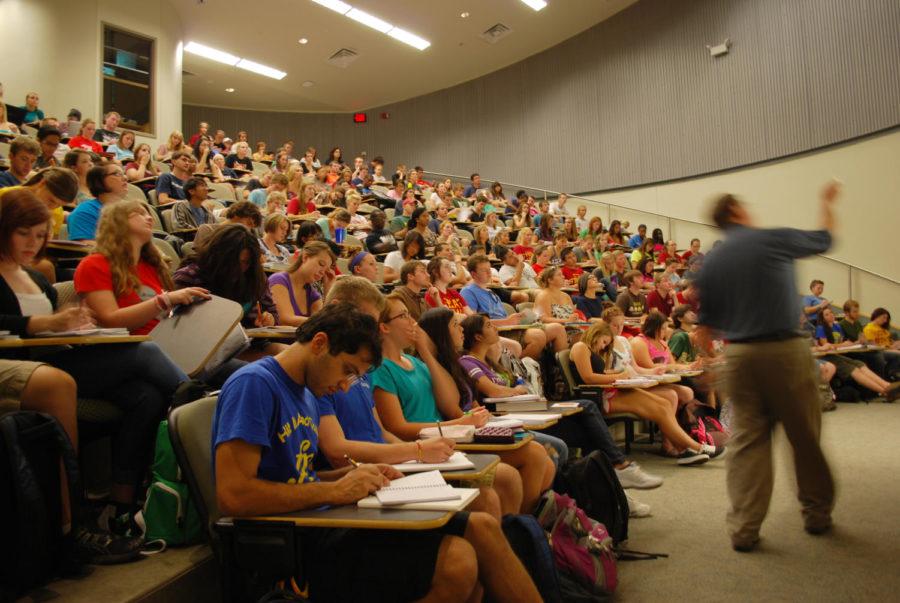Class schedules become a challenge
August 24, 2012
Students who have begun to choose their adventure at Iowa State are likely to have enough trouble finding their classrooms and making sure they get everywhere on time without having to worry if they have a classroom to be in.
According to the Office of the Registrar, there are 3,381 classes being offered and 5,437 different sections. In 2010, there were only 4,984 sections, about 450 fewer.
With as many students as Iowa State has on campus, ensuring every single class has enough space can be challenging. The administration has been hard at work making sure students have the space they need, as well as offering enough course sections so that no one feels like they have been left out.
Jonathan Wickert, senior vice president and provost, said with enrollment records being broken every year for the past four years, they have had time to prepare. This semester, they wanted to make sure all of the colleges and departments were working together to offer students the best experience possible. “One of the key things that we’ve done that has been really helpful this year has been the work of our course availability group.”
Wickert said the group has “done a wonderful job of communicating and acting early to work with high enrollment programs to try and open new sections, get instructors, get the right size class rooms.”
He added: “A lot of people think the work starts here at the beginning of the academic year when people show up on campus, when in fact this group was already moving on this back in the spring time.”
Wickert said the group was made up of people from across campus, including facilities, support staff and the IT department who all worked together to ensure a smooth semester for all students here at Iowa State.
Some colleges have been setting up their own programs to deal with the challenges of classroom availability. The College of Engineering, for example, has implemented the Dean’s Research Initiatives. This is a program where both faculty and students participate in reviewing the ideas for increasing the capacity of their system.
Solutions involved things like a “flexi-lab,” said Gary Mirka, associate dean in the College of Engineering. He said the school might have two lab classes and three spaces. The solution was to create mobile carts where equipment could be rolled in and out depending on which class needed the space, thereby doubling the usage possibility of a single lab space.
In addition to the scheduling dance that many of the departments have been doing, some of the relief in class scheduling comes from new faculty. Over the past year, the university has hired roughly 84 new faculty members for tenure or tenure-track positions. They are spread out all over the university — in animal science, design, engineering and English. With the increased amount of teaching staff available, the university was able to offer more time for students to take the classes they need.
Luckily for students, that translates into controlled class sizes. Departments like engineering, chemistry, math and English have all been able to add more sections without necessarily adding more students per class. With the exception of large lectures, most recitations and small classes are between 20 and 30 students.
For some courses, such as English, any more than that would be impossible. “Writing is not something that can be taught in a large lecture,” said Barbara Blakely, associate professor of English, and faculty member who helped pilot the English 150 program.
The English department has also been very tightly scheduled, making sure everyone who needs to can take English 150 and 250.
Beyond all the physical space available, the university is also starting to promote online classes. Just more than 4,000 students will be taking an online class this semester. Many departments have instituted a hybrid style of classroom where lectures and materials are available online before class time, and class time is reserved for doing work and asking questions.
For those students who might feel overwhelmed with their class sizes or frustrated with their options, Wickert said relief may be down the line. He explained that as the semester progresses, people will start to pick their majors and specialize in what they are taking, which will free up a lot of the general classes that can sometimes get congested.

















